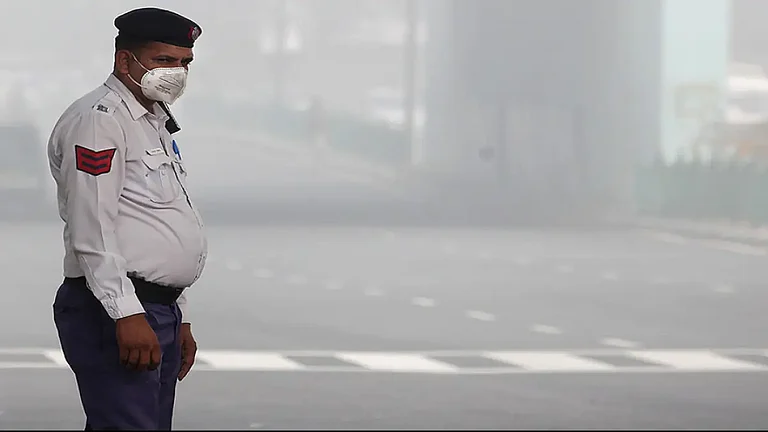Gujarat has successfully tested the world’s first cap-and-trade market for particulate pollution- reducing emissions by up to 30% while increasing industrial profits and regulatory compliance, according to a new study published in The Quarterly Journal of Economics.
Gujarat’s Pollution Market Cuts Emissions by 30%: Can Cap-and-Trade Clean Air in Developing Nations?
India’s first cap-and-trade experiment slashes emissions, boosts compliance, and offers a blueprint for low-income nations battling toxic air
The study emphasised that this market-based approach, launched in Surat offers a viable, scalable mode for combating air pollution in low and middle income countries where the pollution is usually very high and state capacity is often low.
Market Model That Benefits All
“The market delivered a rare win-win-win by reducing pollution, decreasing abatement costs, and raising government’s success at enforcing the law. And, it did all this in a setting where there was great skepticism that pollution markets could work,” said study co-author Michael Greenstone, the Milton Friedman Distinguished Service Professor in Economics at the University of Chicago.
“This success of pollution markets is generating a great deal of interest from other governments that are trying to balance the goals of economic growth and environmental quality. In addition to our continuing collaboration with the Gujarat Pollution Control Board, we’re now working with other states in India and governments in other countries to scale-up the use of pollution markets,” added Greenstone.
Greenstone and his co-authors Rohini Pande and Nicholas Ryan, both of Yale University, and Anant Sudarshan of the University of Warwick, worked with Gujarat to launch and evaluate the market in the city of Surat.
The government mandated 317 large, coal-burning plants to install pollution monitors. From there, half the plants were randomly assigned to the market while the rest were kept under traditional regulations. The plants in the market were given a cap on the total amount of pollution they could emit. Those that easily met the cap traded permits with those who could not meet the cap, with both buyers and sellers benefiting.
“We have worked with the Gujarat Pollution Control Board for over a decade on testing policy interventions such as altering the incentives of third-party pollution monitoring and sharing emissions information with the public,” said Nicholas Ryan. “This collaboration is setting a path for environmental policy across India,” Ryan added.
The benefits of the market exceeded the costs by at least 25 times. The high benefits come from the large mortality costs of air pollution and the low costs of abatement in the market.
“Under the market, both the efficiency of the trading platform and the higher level of compliance allowed regulators to reach their environmental goals, while lowering abatement costs for plants,” shared Anant Sudarshan. “The market is a win for both government and industry, as well as for the public by reducing air pollution,” Sudarshan added.
Because of the success of the market, the Gujarat government expanded it to include those plants originally left out of the pilot experiment. It also launched a second market in the city of Ahmedabad—Gujarat’s largest city and a major industrial hub—and is exploring expanding the market regime to additional industry clusters and pollutants, as well as additional cities.
Meanwhile, the research team is working with another Indian state to develop a statewide market for sulfur dioxide emissions. The research team is providing strategic advice to several other Indian state governments and beginning conversations with other countries on how to use markets to meet their environmental and climate goals.
“The exciting part of the emissions trading scheme that we did for particulate matter,” said Rohini Pande adding, “aside from reducing emissions, is that it provides a proof of concept that even in a setting with lower state capacity, a compliance market can work, and often will outperform the command-and-control approach.”


